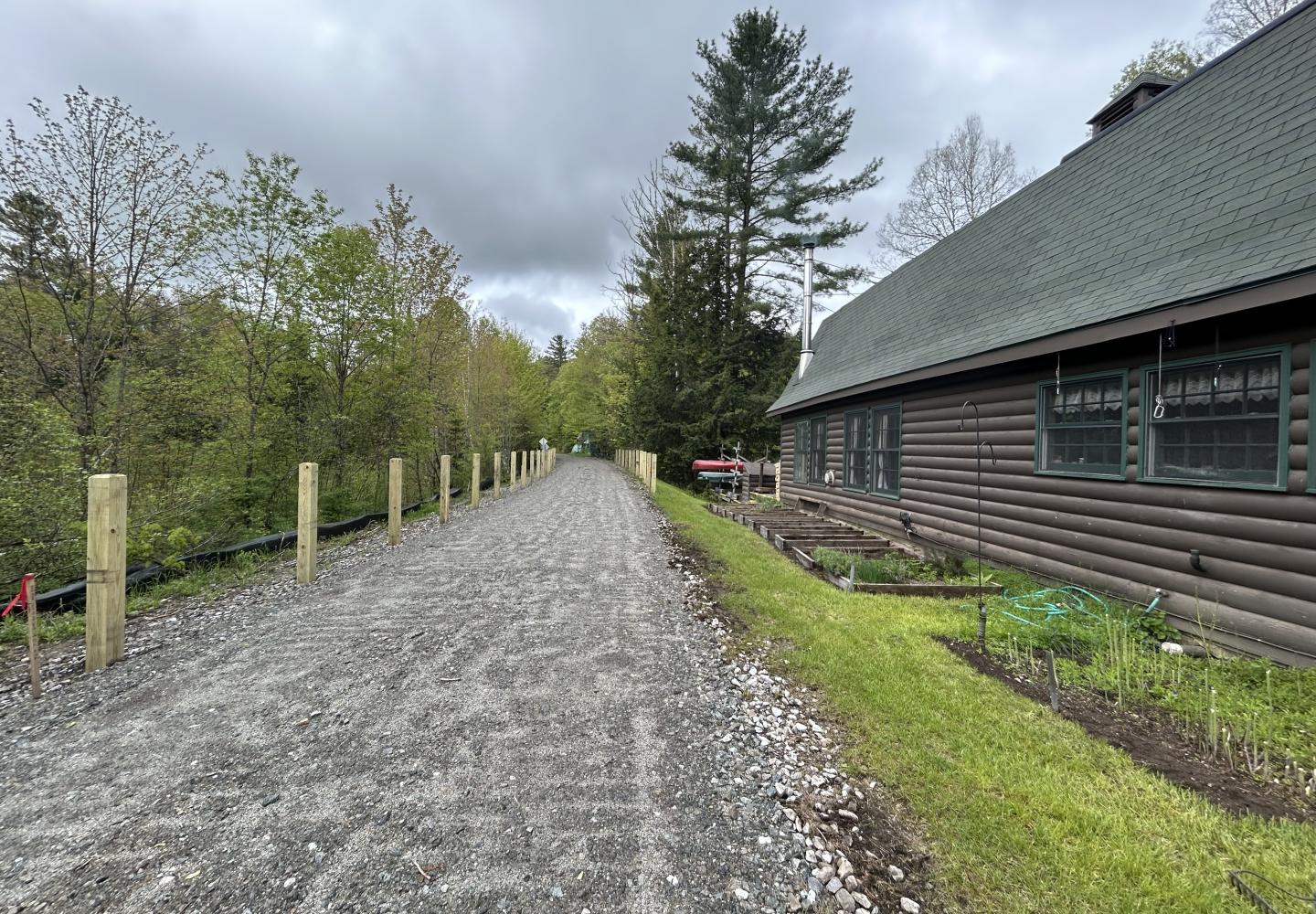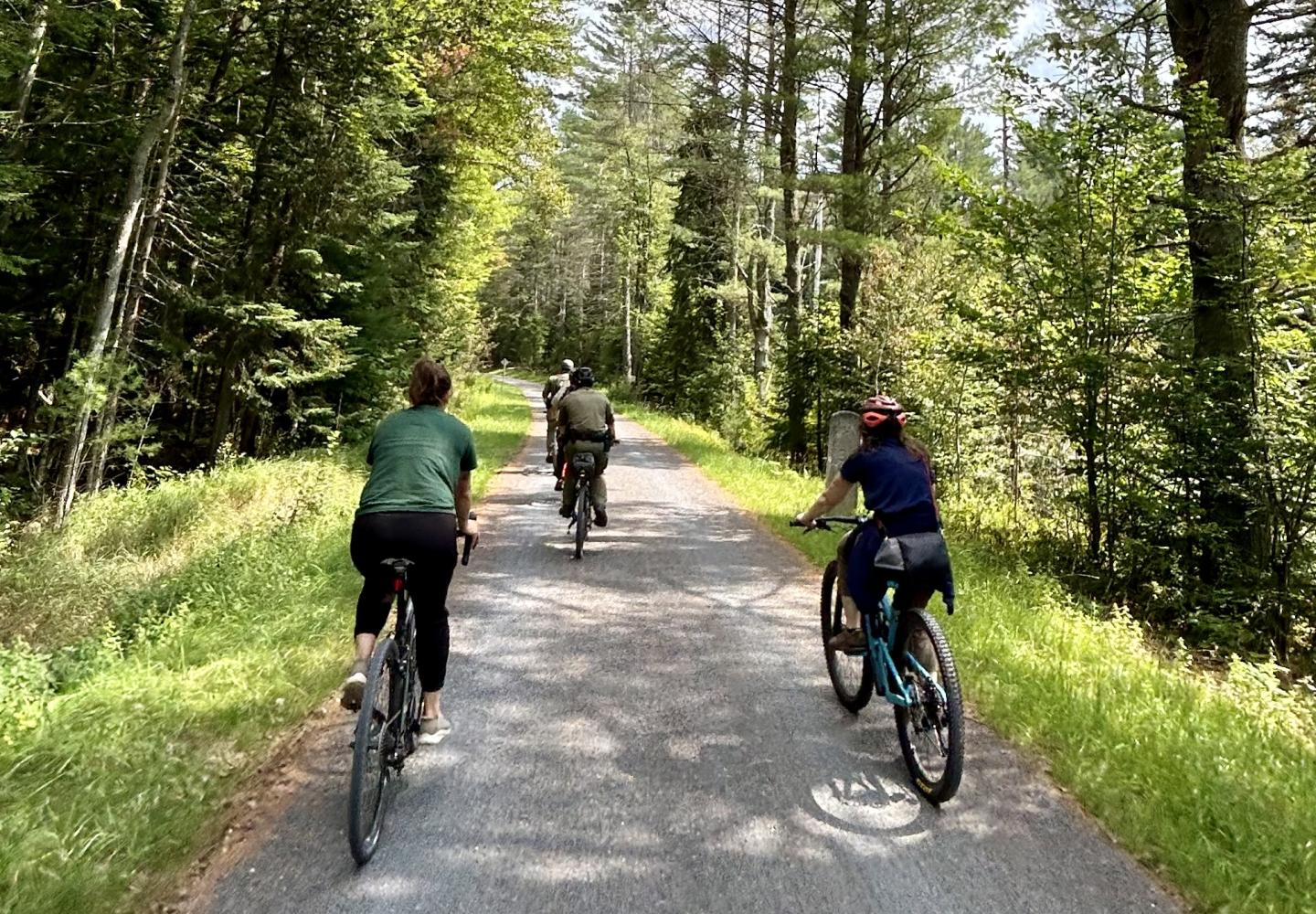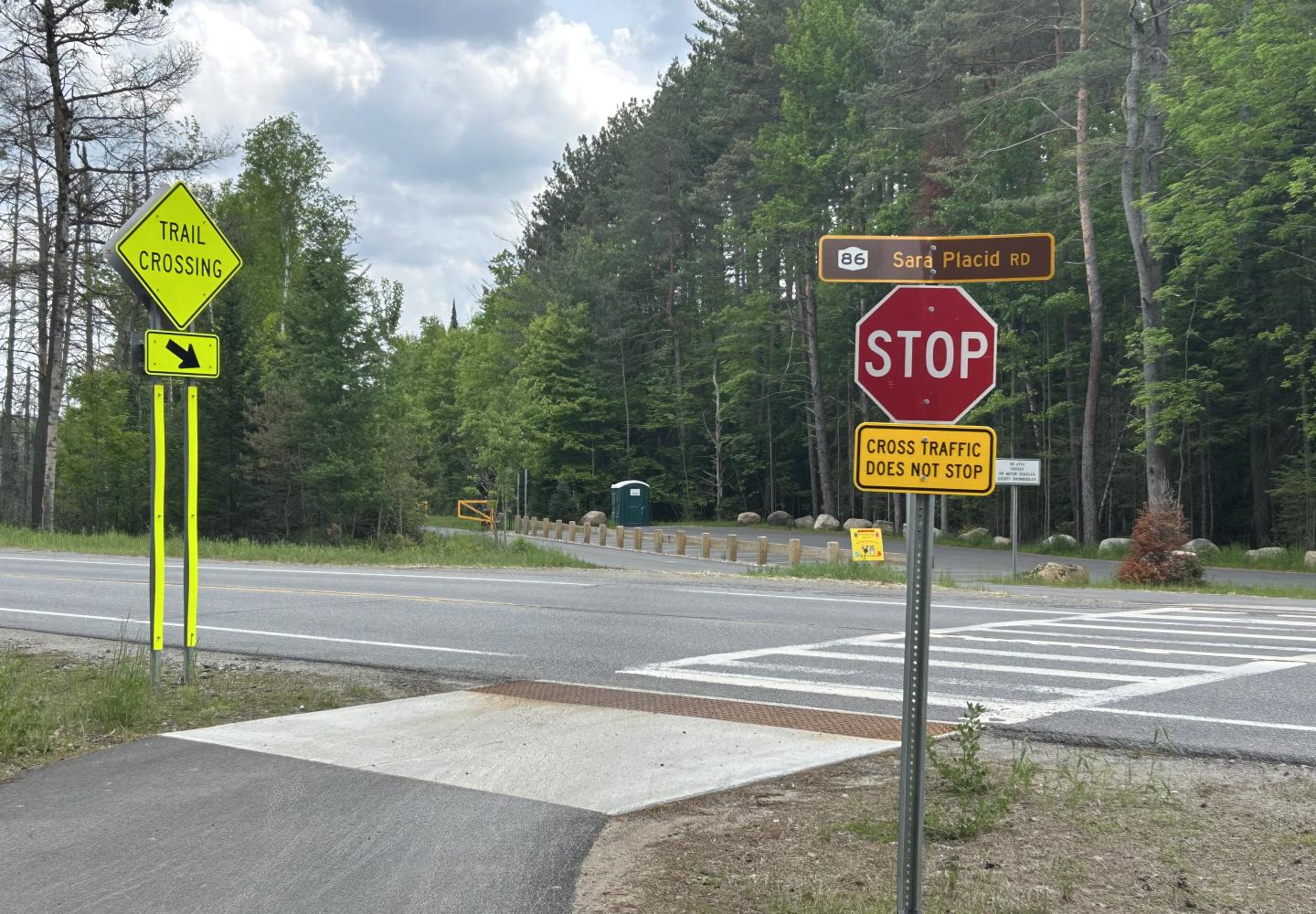INTERVIEW: Julia Goren, ADK Rail Trail Executive Director
After 17 years with the Adirondack Mountain Club and three with the Adirondack Council, Julia Goren will now lead the Adirondack Rail Trail Association.
When I met Julia Goren at Nori’s Cafe in Saranac Lake to talk about her new position as executive director of the nonprofit Adirondack Rail Trail Association (ARTA), I had no idea just how new it was.
ARTA hired Goren in late March, but she did not start until May 19, the day of our interview. Though she had been on the job only a few hours when we got together, you never would have guessed it from her knowledge of the issues facing the rail trail. Obviously, she had been doing her homework in the past two months--in addition to walking or biking the rail trail a few times a week.
ARTA helps the state promote and maintain the rail trail. In an earlier incarnation, it lobbied to create the trail.
Goren grew up outside New York City, but she fell in love with the Adirondacks while spending summer vacations at her family’s camp in Indian Lake. “I always knew I wanted to live full time in the Adirondacks. It was just a question of finding the career path that would get me here,” she said.
Goren, who lives in a cabin outside Saranac Lake, worked 17 years at the Adirondack Mountain Club and three years at at the Adirondack Council. Just before joining ARTA, she had been the interim executive director at the mountain club.

Loving the rail trail
At present, the Adirondack Rail Trail extends 25 miles from Lake Placid to Floodwood Road, passing many ponds, wetlands, and scenic vistas. The final nine miles, from Floodwood to Tupper Lake, is expected to be completed in late summer or early fall.
In the past, cycling has not been Goren’s main sport. She owns a seven-speed hybrid, which she describes as a “yard sale bike” (still it’s a step up from her Huffy). She isn’t into mountain biking and doesn’t like riding in traffic.
“I am a person for whom the rail trail is the perfect place to ride,” she remarks. She has biked the open sections of the trail many times, often with her 11-year-old son. She demurs from picking her favorite part of the trail (“there are so many places to love”), but when pressed she identifies three stretches she especially likes:
- Lake Clear to Floodwood. For its remote, wild setting.
- Fowler’s Crossing. For its views of the marsh and mountains.
- Lake Colby causeway. Especially scenic in late-afternoon light.
“I love the rail trail,” she said. “I really love our community, and I feel this is an opportunity to be of service in some way. I feel really privileged to have that chance.”

ARTA’s role
Goren sees ARTA’s main functions as promoting the rail trail, educating the public, and undertaking basic maintenance.
The organization has published a full-color map that it distributes for free. It includes information about local businesses near the trail. The map will be updated after the trail is extended to Tupper Lake. The group also intends to launch a new website this summer with details about the trail and amenities along the way.
“We want to help out the businesses,” Goren said. “We are trying to help the communities be successful.”
Goren said ARTA plans to deploy volunteer trail ambassadors who will patrol the trail in green vests, providing information and answering questions. At the outset, they will work only on weekends and holidays, when the trail sees the most traffic.
Goren herself plans to spend time at the former depots in the three villages along the trail: Lake Placid, Saranac Lake, and Tupper Lake. She added that she’d love to have an office in the state-owned Saranac Lake depot, which is being rehabilitated.
Under an agreement with the state Department of Environmental Conservation, which manages the trail, ARTA’s volunteers clear the route of debris, cut brush, stain fences, and perform other minor maintenance. For heavy-duty jobs, such as replacing culverts or ditching, the department hires outside contractors. ARTA also provides portable privies at eight locations along the trail. The next volunteer opportunity is scheduled for Saturday, June 21 as part of the inaugural Adirondack Rail Trail Community Day.
Once the rail trail is finished, ARTA intends to install electronic counters at several locations to gauge use. How many will depend on the expense. “I’d love to see counters at Lake Placid, Ray Brook, Saranac Lake, Lake Clear, Floodwood and Tupper,” Goren said.
Since the counters detect every person passing in a given day, whether once or multiple times, ARTA would like to deploy volunteers on occasion to count the number of individual users. The volunteers’ figures then would be compared with those of the automatic counters to fine-tune the use estimates.
Last year, ARTA installed trail counters in two locations--Lake Placid and Saranac Lake. In just six months, the devices detected 92,000 users. However, many people (perhaps most) ride or walk the trail in round trips, meaning they would pass a counter twice. Nevertheless, Goren says the preliminary figures prove the trail’s popularity.
Once the trail is finished, she said, “I don’t think it’s unreasonable to estimate two hundred thousand visitors a year.”

Fowler’s Crossing
The rail trail crosses a number of roads between Lake Placid and Tupper Lake where the state has painted crosswalks. Vehicles are required by law to stop for pedestrians in the crosswalks, including cyclists walking their bikes. In most cases, this is not controversial. The exception is Fowler’s Crossing on NY 86 just east of the village of Saranac Lake.
Fowler’s Crossing sees a lot of motor vehicles, most traveling at or near the speed limit of 45 mph. Drivers are not used to slowing down or stopping for cyclists. Posts on Facebook about Fowler’s Crossing have sparked arguments about the law and proper protocol for motorists and cyclists.
People have suggested a number of solutions, such as lowering the speed limit, installing flashing lights, or building a bridge over the highway.
Goren acknowledges that Fowler’s Crossing is a problem that needs to be discussed with state officials and other stakeholders.
She hopes the controversy will die down as motorists become used to the rail trail. In the meantime, she advises cyclists to be extra cautious at crossings and make eye contact with drivers. “If the vehicle isn’t slowing down, it doesn’t matter if you have the right of way,” she said. “Don’t step out.”
DEC recently installed signs warning trail users that “cross traffic does not stop.” The department says the signs are meant to encourage trail users to stop before crossing a road. Critics contend the signs will confuse people about the law. Goren said ARTA has not yet taken a position on the signs.
Another issue is that the white paint at many crosswalks has faded. This summer, the state plans to install durable reflective pavement markings at the major crossings.

E-bikes
DEC allows class 1 e-bikes on the rail trail. These bikes have a motor that engages only when the rider is pedaling and that disengages at 20 mph. Bikes that can be operated with just a throttle (without pedaling) are prohibited. Nevertheless, such bikes have been seen on the trail.
Goren said ARTA’s volunteer stewards will explain the rules to anyone riding an illegal e-bike, but the stewards do not have the authority to order people off the trail.
What’s next?
Cyclists and other users may have noticed occasional pullouts along the rail trail. Goren said the state will install rustic seating in these spaces. Some also will have educational signs. This work is expected to start next year.
The state also plans to create a spur trail from the rail trail to the busy Fish Creek Pond and Rollins Pond state campgrounds, which border each other.
And then there are the three village depots.
Goren said the Open Space Institute is seeking bids to build a picnic area, parking lot, and restrooms near the former depot in Lake Placid. The building now houses a history museum.
She also said the state is seeking bids for the renovation of the Saranac Lake depot, which is expected to be turned into a visitor center for the rail trail.
The renovation of the Tupper Lake depot is expected to be finished this summer. The village has been soliciting ideas on how to manage the building.
Goren said there are no plans to restore the small depot in Ray Brook, but it might be a suitable site for an educational sign.


